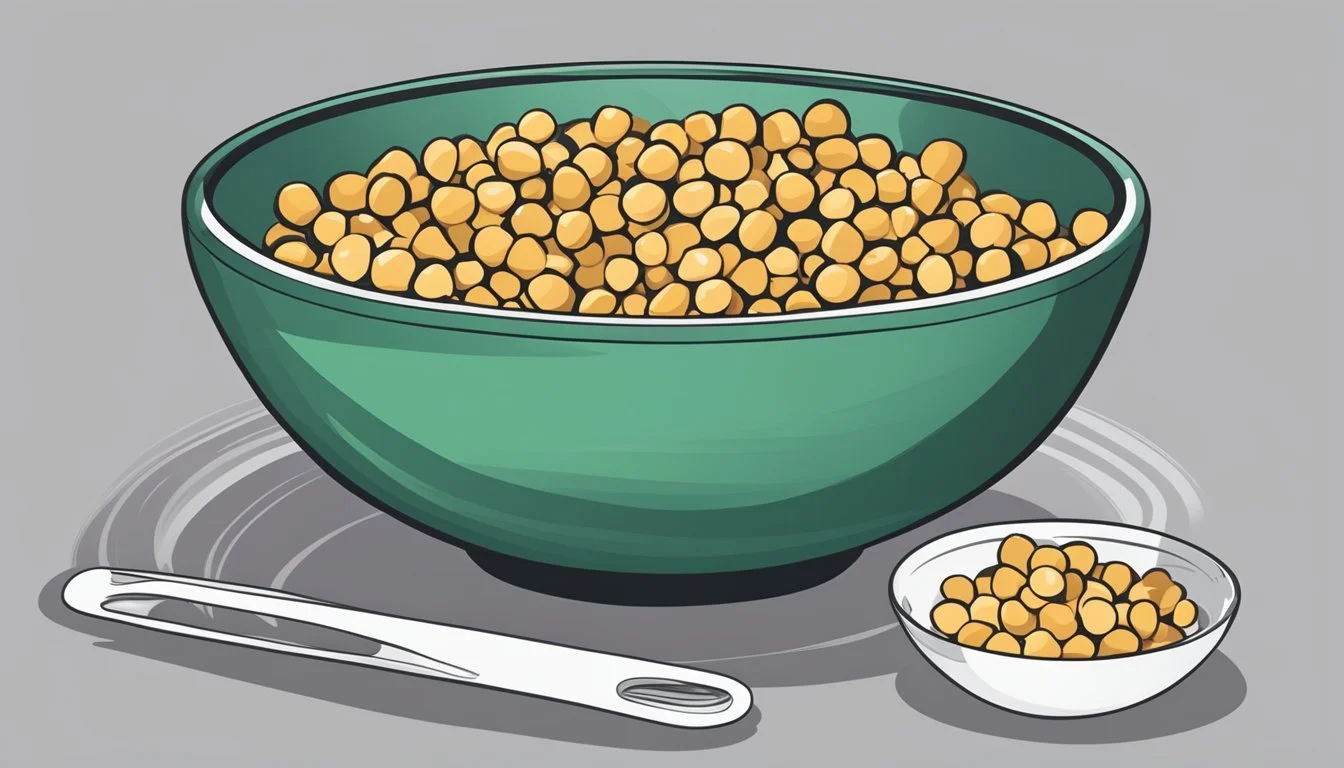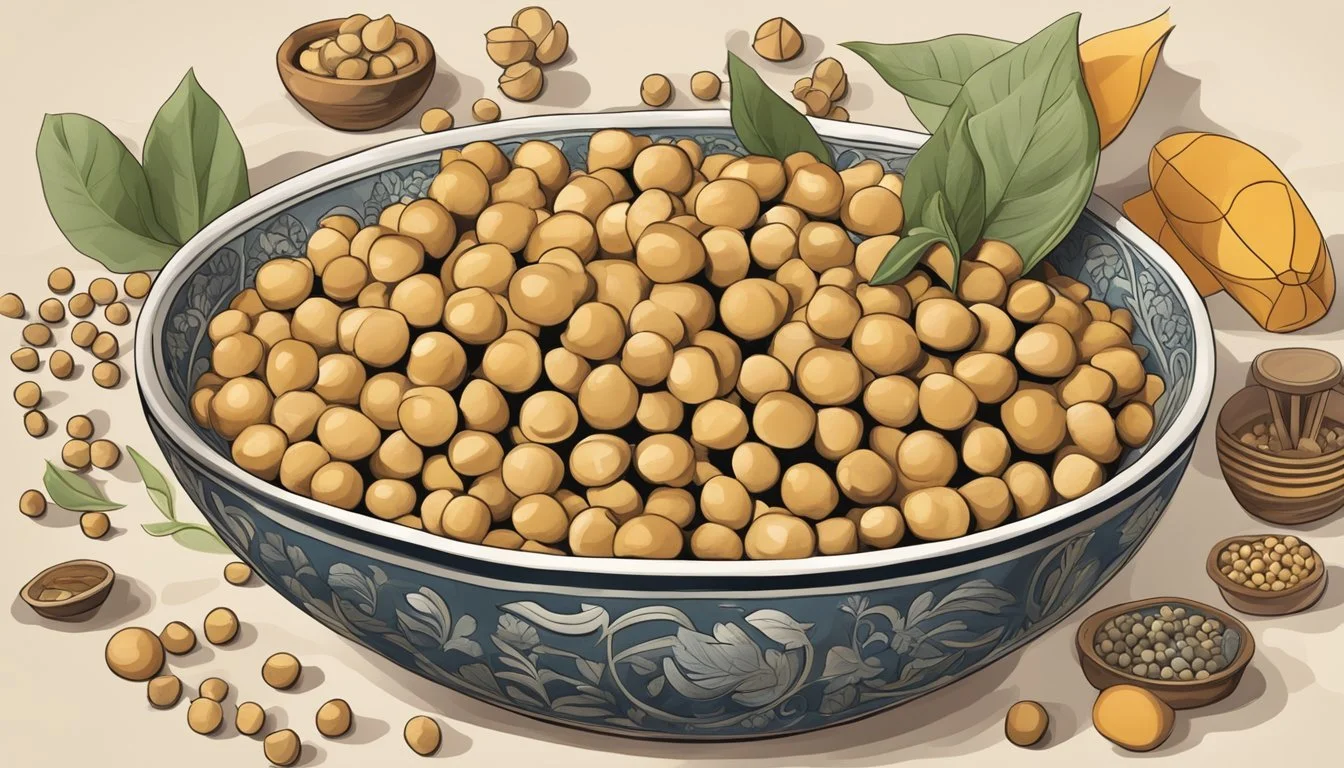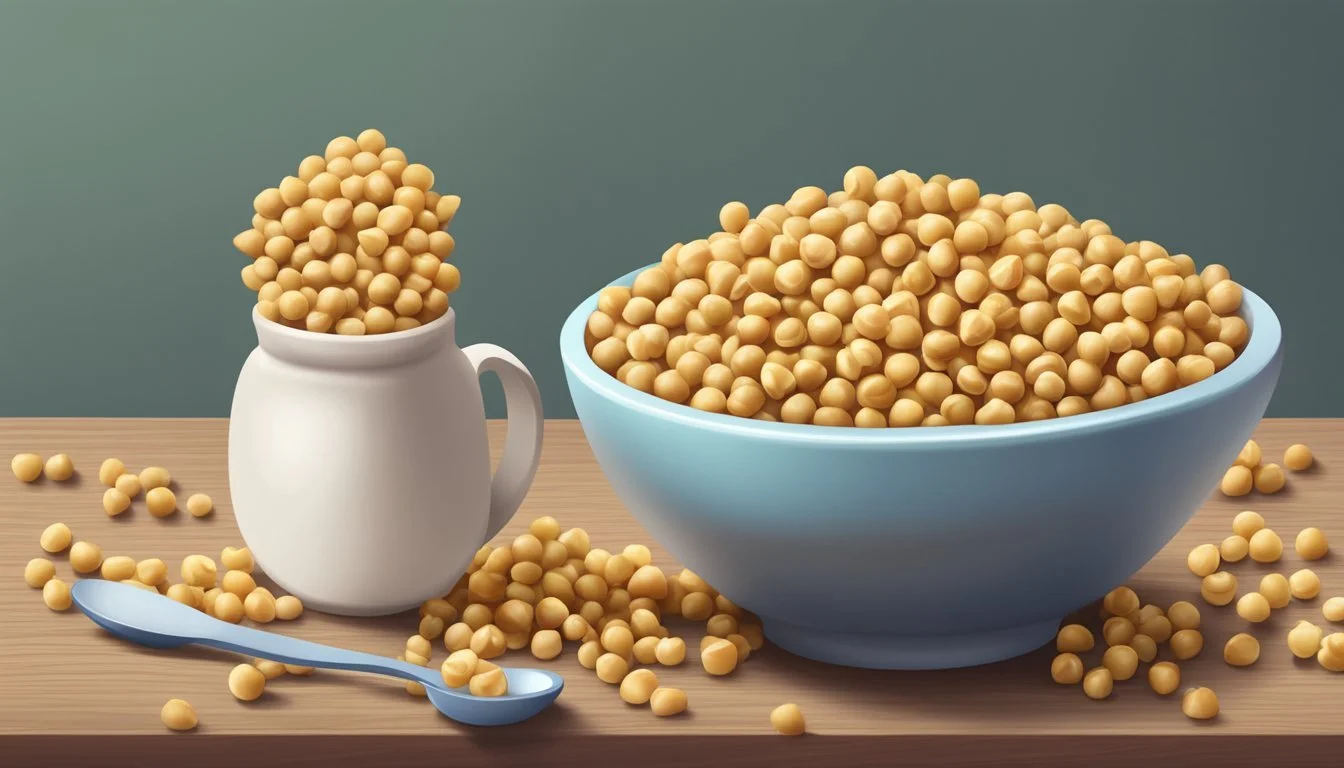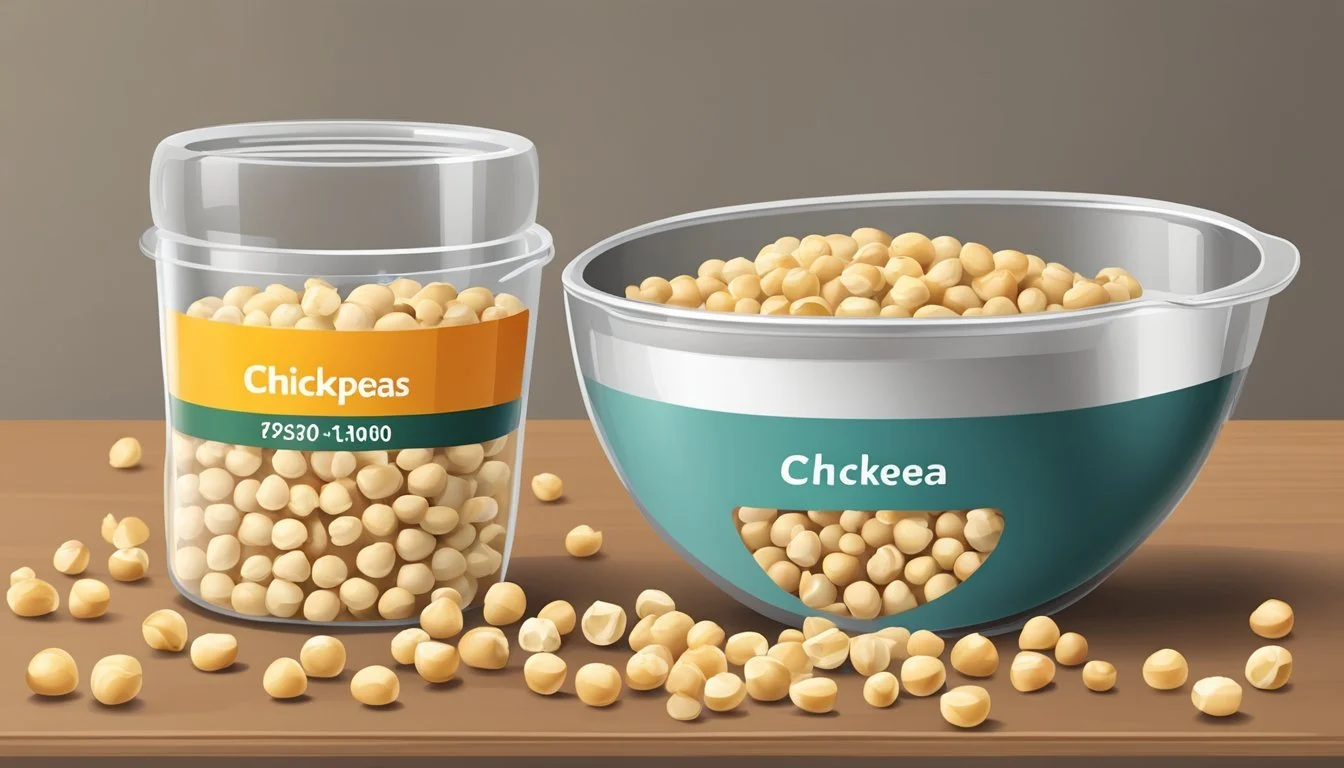How Many Servings of Chickpeas Per Day Is Too Much?
Understanding Legume Intake Limits
Chickpeas, also known as garbanzo beans, are a staple in many diets around the world, valued for their high protein and fiber content. These legumes are a versatile ingredient that can be incorporated into a wide range of dishes from salads to hummus. While chickpeas boast substantial nutritional benefits, like any food, they should be consumed in moderation. A common question among health-conscious individuals is how many servings of chickpeas per day is considered too much.
The recommended daily intake of chickpeas is not definitive and can vary depending on individual dietary needs and health goals. Generally, a serving size of half a cup to one and a half cups of chickpeas per day can be an appropriate amount for most people. It is vital to remember that chickpeas are part of a broader dietary pattern, and their consumption should be balanced with other sources of proteins, carbohydrates, and fats.
While chickpeas contribute positively to a balanced diet, overconsumption can lead to digestive discomfort for some individuals. This is attributable to their high fiber and complex carbohydrate content, which, when eaten in large quantities, can cause gas, bloating, or intestinal distress. People with sensitive digestive systems or conditions such as irritable bowel syndrome (IBS) may need to pay particular attention to their chickpea intake to avoid exacerbating symptoms.
Nutritional Value of Chickpeas
Chickpeas are a nutritious legume providing a rich source of fiber, protein, and various vitamins and minerals critical to human health. They are a versatile ingredient in various cuisines, contributing significantly to dietary nutrient requirements.
Macronutrients and Calories
Chickpeas contain a balance of macronutrients making them a filling and energy-providing food. A 1-cup serving offers approximately 210 calories, which includes over 10 grams of dietary fiber and more than 10 grams of protein. This legume has a low fat content with roughly 3 grams per half-cup serving of canned chickpeas.
Vitamins and Minerals
Vitamins and minerals are abundant in chickpeas. They are particularly high in folate and manganese. For minerals, a 1-cup serving delivers around 10% of the recommended daily value (DV) of potassium, and 11% of the DV for selenium. This serving size also contributes to the intake of iron, calcium, magnesium, phosphorus, and other essential nutrients.
Fiber Content
Chickpeas boast a high fiber content, with around 10 grams per cup. Dietary fiber is beneficial for digestive health, aiding in bowel regularity and contributing to satiety, which can assist in weight management.
Protein Quality
The protein in chickpeas is of high quality for a plant-based source, with a 1-cup serving providing about 11 grams. The protein from chickpeas is important for muscle repair and immune function, though it should be complemented with other protein sources to ensure all essential amino acids are consumed as chickpeas are not a complete protein on their own.
Health Benefits and Risks
Chickpeas offer a rich profile of nutrients that can promote health and help manage various conditions but consuming them in excess may lead to adverse effects. An accurate balance is crucial in reaping the benefits while avoiding potential risks.
Cardiovascular Health
Chickpeas are a beneficial food for heart health due to their high dietary fiber content, which can help lower LDL cholesterol and reduce the risk of heart disease. The presence of potassium and magnesium in chickpeas also aids in maintaining healthy blood pressure levels.
Diabetes Management
With a low glycemic index, chickpeas can be an excellent addition to a diabetic's diet. They help in regulating blood sugar levels due to their fiber content, which can prevent sudden spikes and troughs in glucose levels, thereby aiding in diabetes management.
Digestive Health
Chickpeas contribute to digestive wellness as they are packed with dietary fiber. This facilitates smooth digestion and can reduce symptoms of irritable bowel syndrome (IBS). However, excessive consumption might lead to intestinal distress due to the presence of saponins.
Weight Management
The fiber and protein in chickpeas contribute to satiety, helping individuals feel full for longer periods, which is helpful in weight management. Their nutrient density can prevent weight gain and combat obesity by promoting a feeling of fullness with fewer calories.
Potential Adverse Effects
While chickpeas possess health-promoting attributes, overconsumption can lead to intestinal distress, such as bloating and gas. Individuals with inflammation issues should be cautious, as chickpeas contain saponins, which may exacerbate certain conditions like IBS.
Culinary Uses and Recipes
Chickpeas, also known as garbanzo beans, are highly versatile in cooking, offering a plethora of recipe opportunities, from hummus and dips to salads, soups, and main dishes. They can be prepared in various ways to fit different culinary needs, being an excellent source of plant-based protein.
Preparing Chickpeas
Before incorporating chickpeas into recipes, they should be properly prepared. Dried chickpeas require soaking and cooking. For quick preparation, a pressure cooker can reduce cooking time significantly, cooking them in about 10 minutes for large chickpeas. Canned chickpeas are a convenient alternative, simply requiring a rinse before use. They serve as a shortcut and can be used instantly in recipes, saving time and effort.
Hummus and Dips
Hummus, a popular Middle Eastern dip, is made by blending chickpeas with tahini, garlic, lemon juice, and seasonings. The chickpeas should be cooked until soft for the creamiest texture, typically done under high pressure for a short duration. Dips often serve as complete protein sources when paired with bread and are perfect for snacking or as appetizers.
Salads and Soups
Salads gain substance and nutrition with the addition of chickpeas. They offer a pleasant bite and pair well with a variety of vegetables and dressings. Soups with chickpeas receive a boost in both texture and protein content, contributing to hearty and nourishing meals. Both salads and soups benefit from the bean's mild flavor, which complements a broad range of ingredients.
Stews and Main Dishes
Chickpeas are a staple in many stews and main dishes around the world. They can be simmered slowly in a slow cooker to absorb flavors from spices and other ingredients. Chickpeas contribute to the dish's overall heartiness and can be adapted to a multitude of cuisines, including Indian curries, Moroccan tagines, and Spanish cocidos. They not only thicken the stew but also add substantial nutritional value as a complete protein when combined with grains.
Portion Sizes and Consumption Recommendations
In determining the appropriate portion sizes for daily chickpea consumption, it is essential to balance nutrient intake and maintain dietary variety. This balance hinges on understanding recommended intake, recognizing the effects of overconsumption, and ensuring varied nutrient sources.
Recommended Daily Intake
A moderate consumption of chickpeas complements a balanced diet. Adults should aim for approximately 1 to 1.5 cups (200 to 300 grams) of chickpeas as a daily portion. This amount provides a substantial source of plant-based protein, especially important for those following vegan or vegetarian diets. A single cup of chickpeas approximately contains 269 calories, highlighting their role as a nutrient-dense food.
Calories: 269 per cup (164g)
Portion size: 1 to 1.5 cups (200 - 300g) per day
Effects of Overconsumption
While chickpeas are deemed a superfood, overconsumption can lead to adverse effects, particularly due to their high fiber content. Excessive fiber intake can cause digestive discomfort and may disrupt absorption of other nutrients. Additionally, consuming high amounts of chickpeas can increase caloric intake substantially, which could lead to weight gain if not balanced with physical activity.
Digestive discomfort: Potential outcome of high fiber overconsumption
Nutrient absorption: Can be disrupted by excessive fiber intake
Importance of Variety in Diet
Chickpeas should be one component of a diverse diet. Though they are an excellent source of plant-based protein, relying solely on chickpeas can lead to nutritional imbalances. A diet incorporating a wide range of fruits, vegetables, whole grains, and proteins ensures a broad spectrum of essential vitamins and minerals. For those concerned with sodium intake or preservatives, it's also important to choose chickpeas that are low in sodium and free from added preservatives, particularly when opting for canned options.
Balanced diet: Incorporating a mix of protein sources, whole grains, and vegetables
Sodium and preservatives: Opt for low sodium and preservative-free options when possible
Dietary Considerations and Alternatives
When including chickpeas in a diet, one must consider dietary needs and preferences. Chickpeas offer versatile options for those on specialized diets, but awareness of their nutritional impact and potential alternatives is key.
For Vegan and Plant-Based Diets
For individuals following a vegan or plant-based diet, chickpeas serve as an excellent source of protein and other nutrients. Typically, 1 to 1.5 cups of chickpeas a day can contribute meaningfully to their protein requirements. They can also be substituted with other legumes like lentils or pulses, ensuring nutritional variety.
For Gluten-Free Diets
Chickpeas are naturally gluten-free, making them a safe and nutritious option for those with gluten intolerances or celiac disease. They can be integrated into meals in place of gluten-containing grains like wheat. Other gluten-free legume options include beans and peas which are from the same legume family and maintain similar nutritional profiles.
Legume Allergies and Sensitivities
Individuals sensitive to legumes might have to limit or avoid chickpeas. Signs of legume allergies include gastrointestinal discomfort after consumption. For those who are allergic or sensitive, grains like quinoa and buckwheat may serve as alternatives, though they do not provide the same protein content as legumes.
Preparation and Storage Tips
Proper preparation and storage of chickpeas are crucial to maximizing their nutritional benefits while minimizing potential drawbacks, such as gas or toxins from raw chickpeas. Attention to these practices ensures optimal flavor, texture, and safety.
Rinsing and Soaking
Before cooking, rinse chickpeas thoroughly under cold water to remove any dirt and reduce sodium levels. Soaking dried chickpeas for at least 4 hours, or overnight, will aid in digestion and decrease cooking time. It's important to discard the soaking water to eliminate any soluble fiber that may cause gas and to rinse the chickpeas again to remove any released toxins.
Cooking Methods
Chickpeas can be cooked using a variety of methods that can influence their impact on blood sugar levels, appetite, and cholesterol levels. For homemade hummus, blend cooked chickpeas with garlic, cumin, and other flavors to enhance taste and reap fiber benefits. Ensuring chickpeas are adequately cooked until tender can improve their choline content which is beneficial for managing high blood pressure.
Storing Leftovers
Leftover chickpeas can be stored in the fridge for 3-5 days. Place them in an airtight container and, if desired, lightly drizzle with oil to maintain moisture. For extended storage, freeze cooked chickpeas in an airtight container or zip-top bag. Spread them in a single layer on a baking sheet to freeze before transferring them into a container to prevent clumping, allowing you to use portions as needed.
Cultural and Historical Significance
Chickpeas have had a profound impact on various cuisines and agricultural societies throughout history. This legume isn’t just a staple food; it’s embedded in cultural identities and economies.
Chickpeas in the Middle East
The Middle East has long been the cradle of chickpeas, with evidence suggesting their cultivation dates back around 11,000 years. They form the base of many traditional dishes such as hummus and falafel, illustrating not only their culinary importance but also their role in social and cultural events. Chickpeas serve as a significant source of protein in the region and are a common fixture in both everyday meals and festive gatherings.
Chickpeas in Mediterranean Cuisine
In Mediterranean cuisine, chickpeas are regarded for their versatility and nutritional value. Countries like France have integrated chickpeas into an array of dishes, from stews and salads to the Provencal specialty, socca — a type of thin pancake made from chickpea flour. They provide a creamy texture and a nutty flavor that is key to many recipes within this culinary tradition.
Global Production and Consumption
Globally, chickpeas play a major role in the agricultural sector. India is the leading producer, contributing to a majority of the world's supply. The production figures from different countries are as follows:
Country Production (million tons, as of 2016) India 7.1 Myanmar 0.6 Pakistan 0.5 Turkey 0.5 Russia 0.4 Ethiopia 0.3
Such numbers reflect the global reliance on chickpeas as a dietary staple and their importance in international trade. Their high yield levels, at about 850 kg/ha, emphasize their economic importance and the role they play in feeding populations worldwide.
Future Research and Developments
Advancing understanding of chickpeas' effects on human health, perfecting sustainable agricultural techniques, and exploring genetic enhancements are critical focuses for future research.
Potential Health Discoveries
Researchers are increasingly examining how the high fiber and antioxidant content found in chickpeas contribute to improved health outcomes. They are scrutinizing the legume's role in maintaining cardiovascular health by managing blood glucose levels and reducing LDL cholesterol. Investigations aim to confirm chickpeas' potential in reducing the risk of diseases such as cancer while promoting regularity and bone health. Emphasis is also placed on integrating chickpeas into a well-rounded plant-based diet for maintaining a healthy body mass index (BMI).
Sustainable Agriculture Practices
Sustainable agriculture research is key to chickpea production and involves refining practices that both meet the rising global demand and address environmental challenges. Focus areas include:
Crop Rotation: Inclusion of chickpeas in crop rotations to replenish soil magnesium and nitrogen levels.
Water Efficiency: Developing drought-resistant chickpea varieties to conserve water resources.
These practices intend to maximize the productive use of land and promote long-term ecological balance.
Genetic Modification Advancements
In the genetic realm, scientists are advancing methods to enhance chickpea crops. Goals of such advancements include:
Yield Improvement: Breeding chickpea strains with higher yields to satisfy an expanding population's needs.
Nutrient Enhancement: Engineering varieties with enhanced levels of fiber and antioxidants.
Through these innovations, chickpeas may become more versatile in combating nutritional deficiencies, particularly in regions where animal protein is scarce.
Conclusion
Consuming chickpeas can contribute positively to one's diet by offering a source of protein, fiber, and various nutrients. Recommended intake, based on health guidance, suggests up to 1/2 cup daily or no more than 3.5 cups weekly. This falls within the bounds of moderation.
A balanced diet must include a variety of foods, ensuring adequate intake of all essential nutrients while avoiding excessive consumption of any one food. Chickpeas are a beneficial part of such a diet, but they should be complemented with fruits, vegetables, and whole grains.
Nutrient Benefits from Chickpeas Protein Supports muscle health Fiber Aids in digestion Vitamins Crucial for metabolism
Those seeking to incorporate chickpeas into their eating habits should also be aware that while health benefits are numerous—including aiding in weight management and reducing the risk of certain diseases—moderation is key. Exceeding recommended amounts could potentially lead to digestive discomfort given the high fiber content.
Individuals should consider their overall dietary needs, which can be influenced by factors such as age, activity level, and health goals. A healthcare provider or dietitian can offer personalized advice, particularly for those with specific health conditions that may affect dietary choices.
In summary, chickpeas offer health benefits and are a valuable addition to a balanced and varied diet when consumed in recommended quantities.










